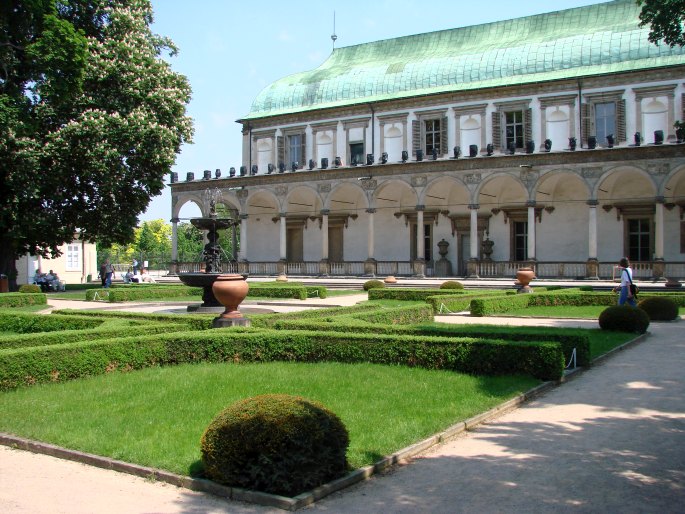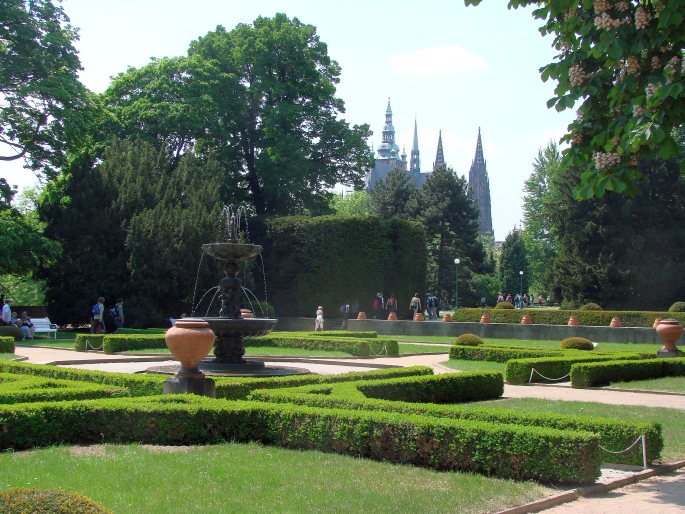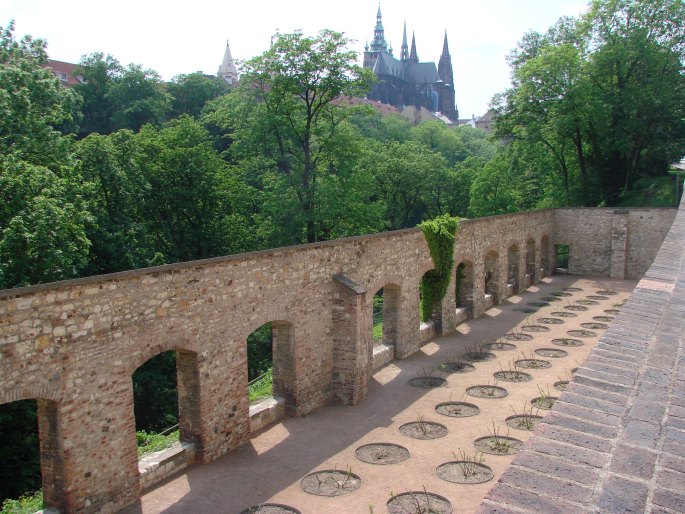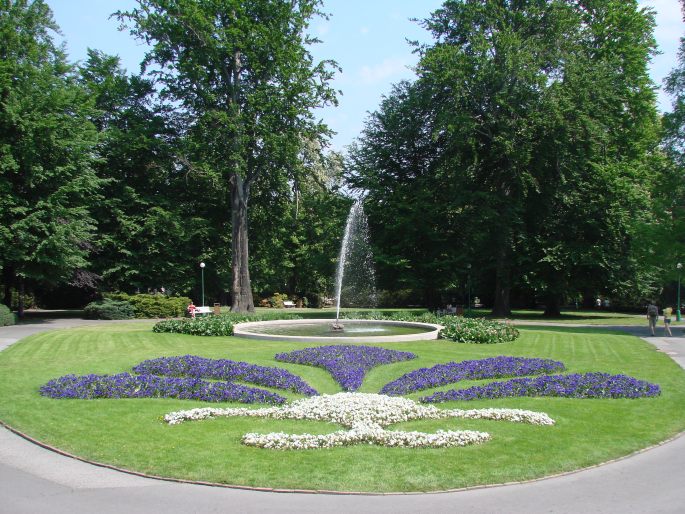The Royal Garden with Queen Anne’s Summer Residence is a part of the gardens of the Prague Castle. It replaced an old vineyard and was founded by Emperor Ferdinand I of Habsburg. Its purpose was to organize the king’s court and also to collect exotic plants from distant countries.

The Royal Garden has changed in its appearance over the centuries. Its present look is the result of centuries of development – from the Renaissance through the Baroque and the ideals of landscape modifications in the 19th century to the very modern design of contemporary greenhouses. The style of garden is quite diverse, but not disruptive.

Construction of the garden was started in 1534. Ground works of The Summer Residence (often called The Belvedere) designed by Paolo della Stella were laid in 1538. The Renaissance bronze Singing Fountain stands in front of The Belvedere as of 1575. The Reinhardt brothers built a separating flower bed in the middle of the garden afterwards. Further development of the garden is mainly connected with the architect Bonifac Wohlmut. Under his guidance the Ball Game Pavilion and The Fig House were built.

During the reign of Emperor Rudolf II the garden was further developed. On the top terrace exotic plants were grown, especially bulbs and spices, the lower terrace served for garden parties. In the eastern part of the garden was an orchard with fruit trees. A gardinetto with four borders was established around the Singing Fountain. The imperial astronomer Tycho Brahe had an observatory in the Belvedere. An orangery was built in 1590, where mainly citruses, pomegranate (Punica granatum) and fig trees (Ficus carica) grew. In the western part of the orangery a modern greenhouse currently sits, which was built in 1999. It is used for growing indoor plants for representation rooms of the Castle.

Significant changes took place in the Baroque, a large reconstruction occurred between 1728 and 1735. On the upper terrace a new parter from Buxus sempervirens was grown and a lower terrace pool surrounded by lindens was built. Valuable sculptural decoration is by the workshop of Matthias Bernard Braun. Kilian Ignaz Dientzenhofer built the greenhouse here.

At the end of the 18th century the garden has undergone some significant transformations again – the landscape style had an impact on image of the garden in this time. The axis of the eastern part of the garden is a tree alley now, the orchard changed to a landscape park, and the giardinetto near The Belvedere was completely abolished.

In the 20 century, the old giardinetto in front of Belvedere was restored, its current form is the work of Pavel Janak and Otakar Fierlinger. The garden covers an area of 3.6 hectares and is located at altitudes between 242 and 258 m.

The Deer Moat (Jelení příkop) is separate from the Royal Garden. It’s a remnant of a former defensive ditch and earned its name because of deer which have been released here in the past. It is said that in 1723 Emperor Charles VI shot deer directly from the windows of the Spanish Hall in the Castle. Today the Deer Moat is modified and made available to the public. Local walks are very pleasant. It is unbelievable that only a little above in the Castle a mass tourism “safari” is happening. Hunting is now just moved a few tens of meters above.

These images were taken in May of 2008.


